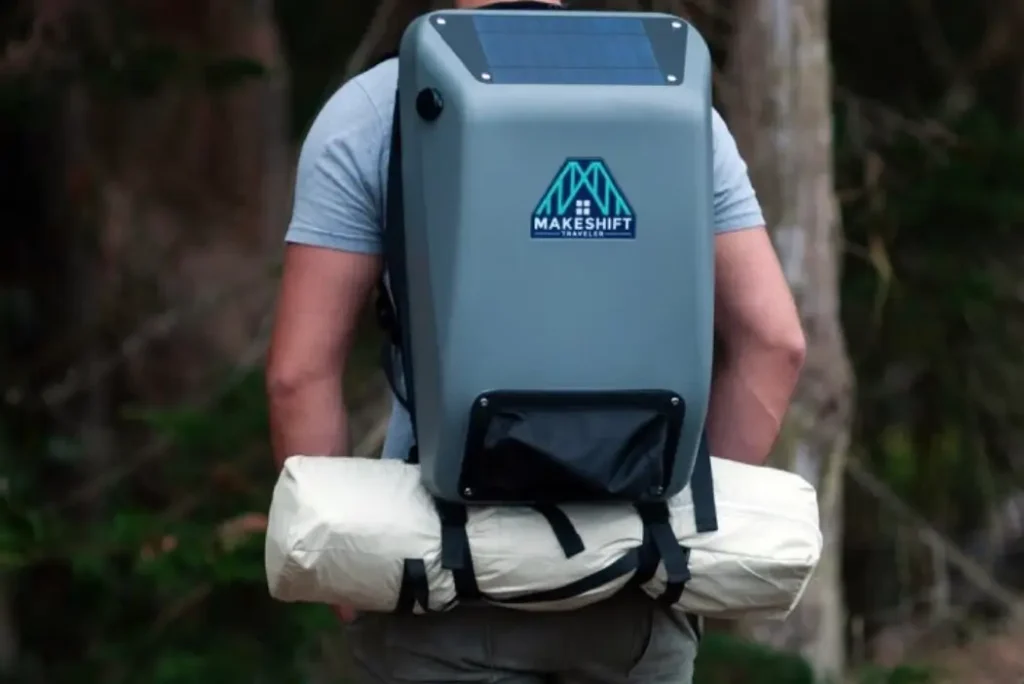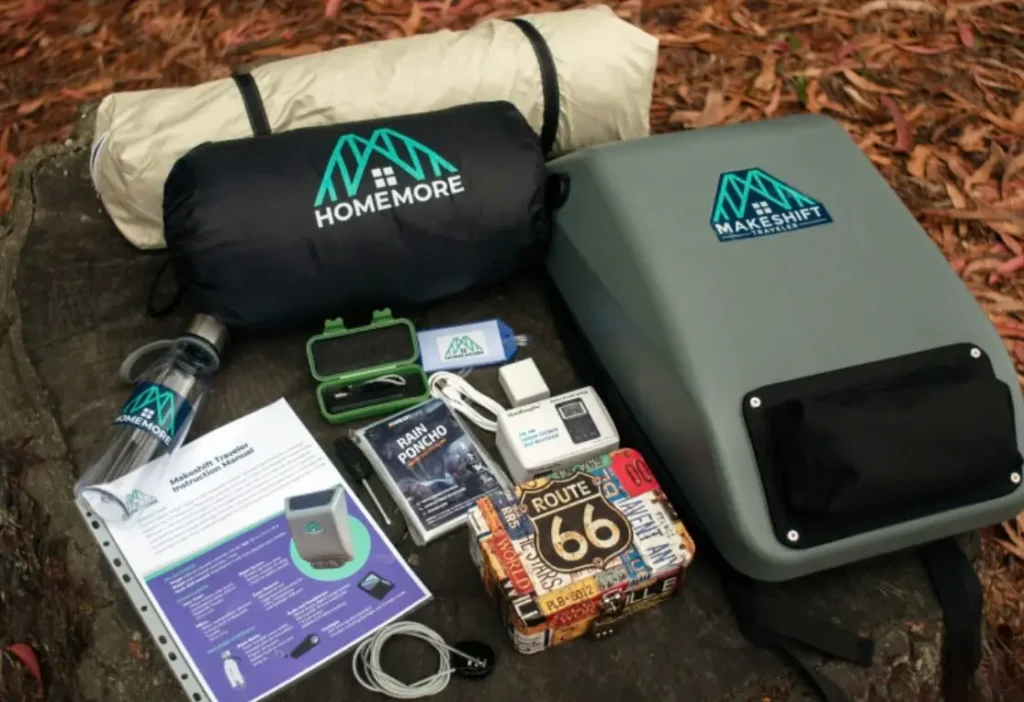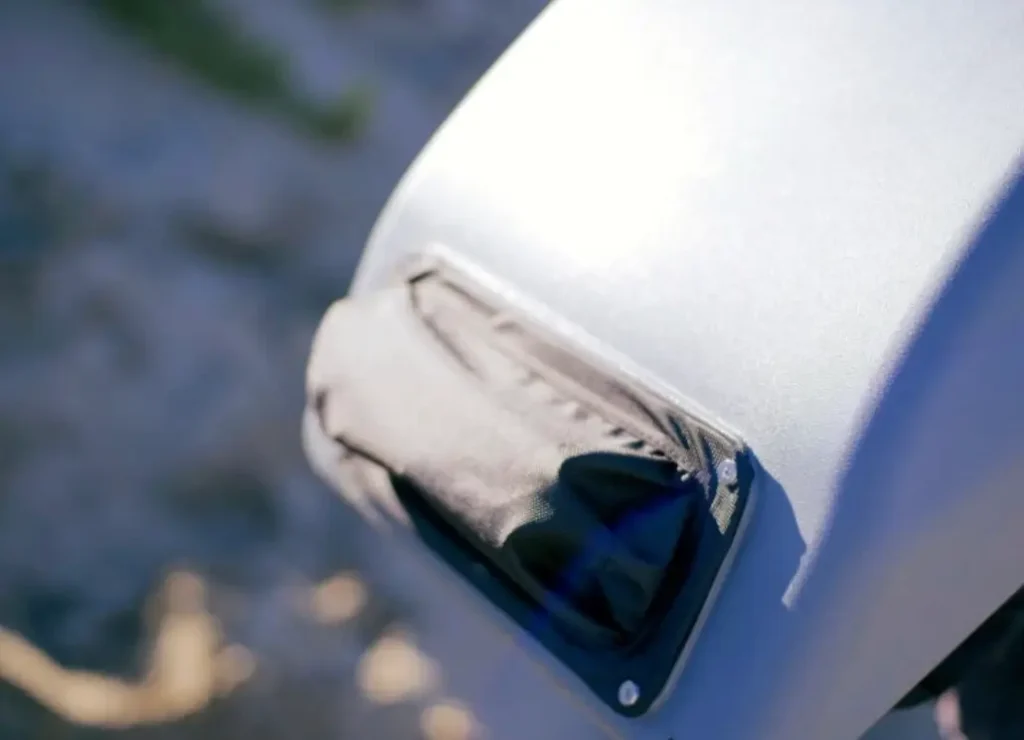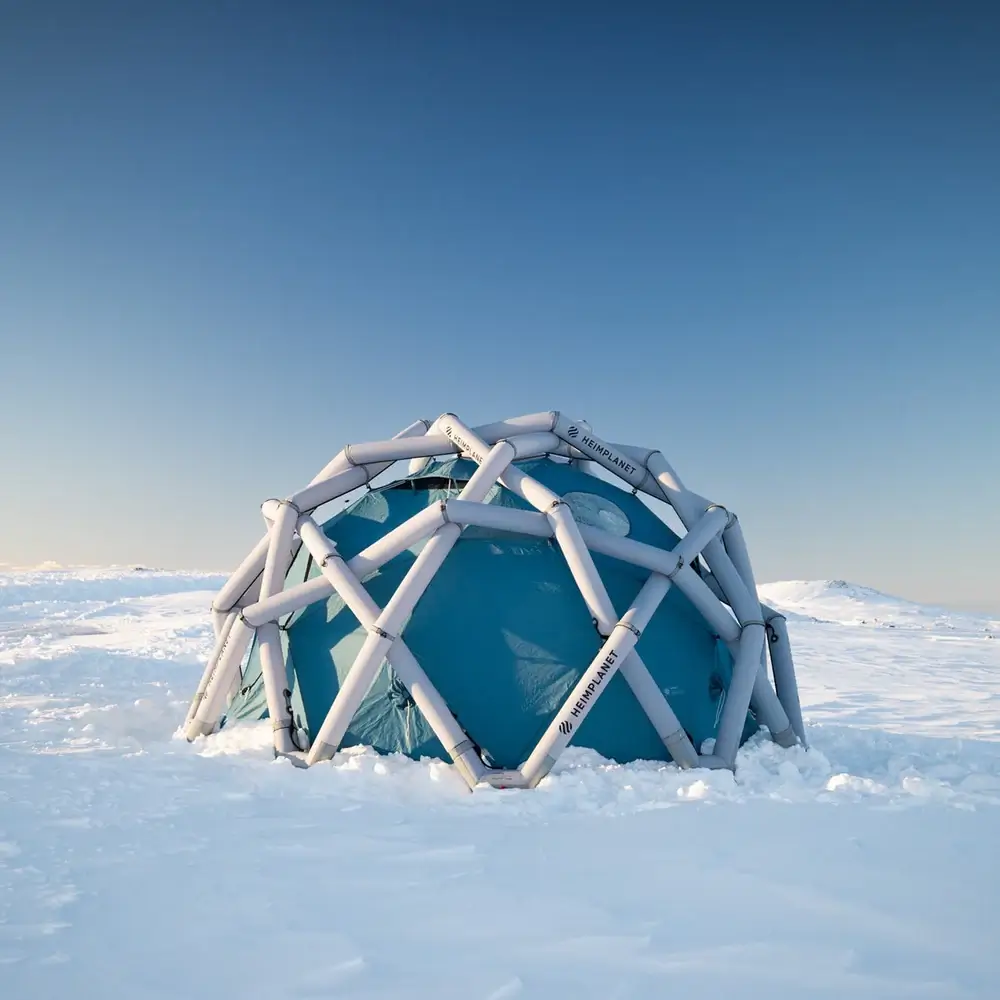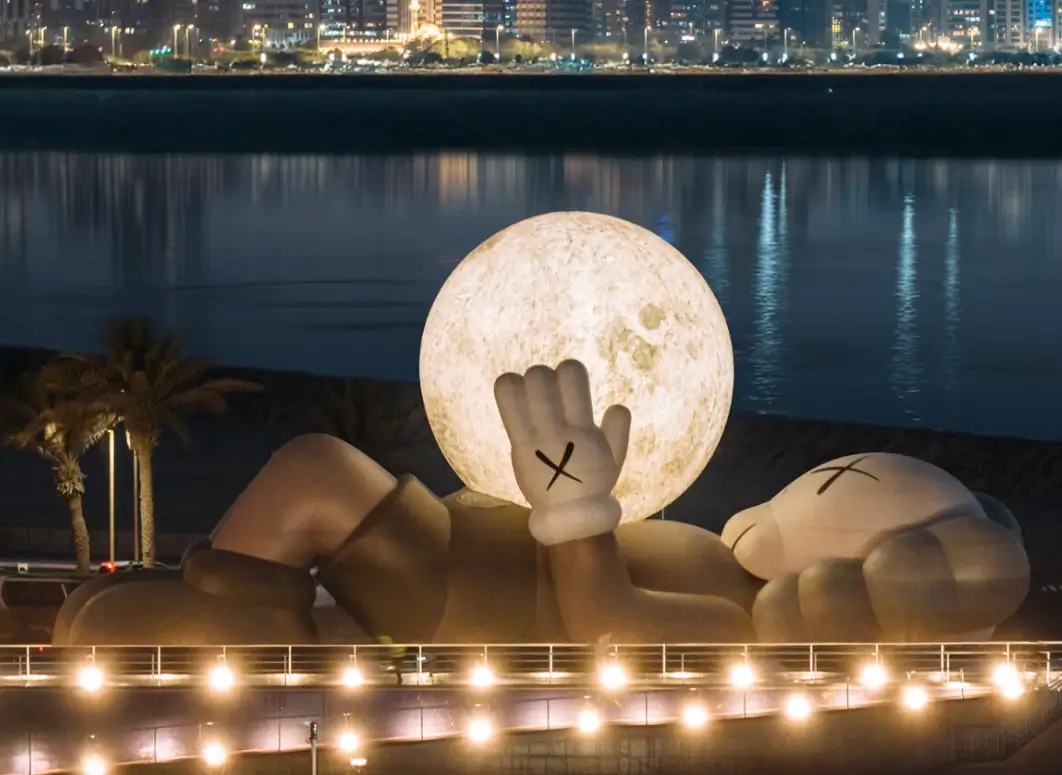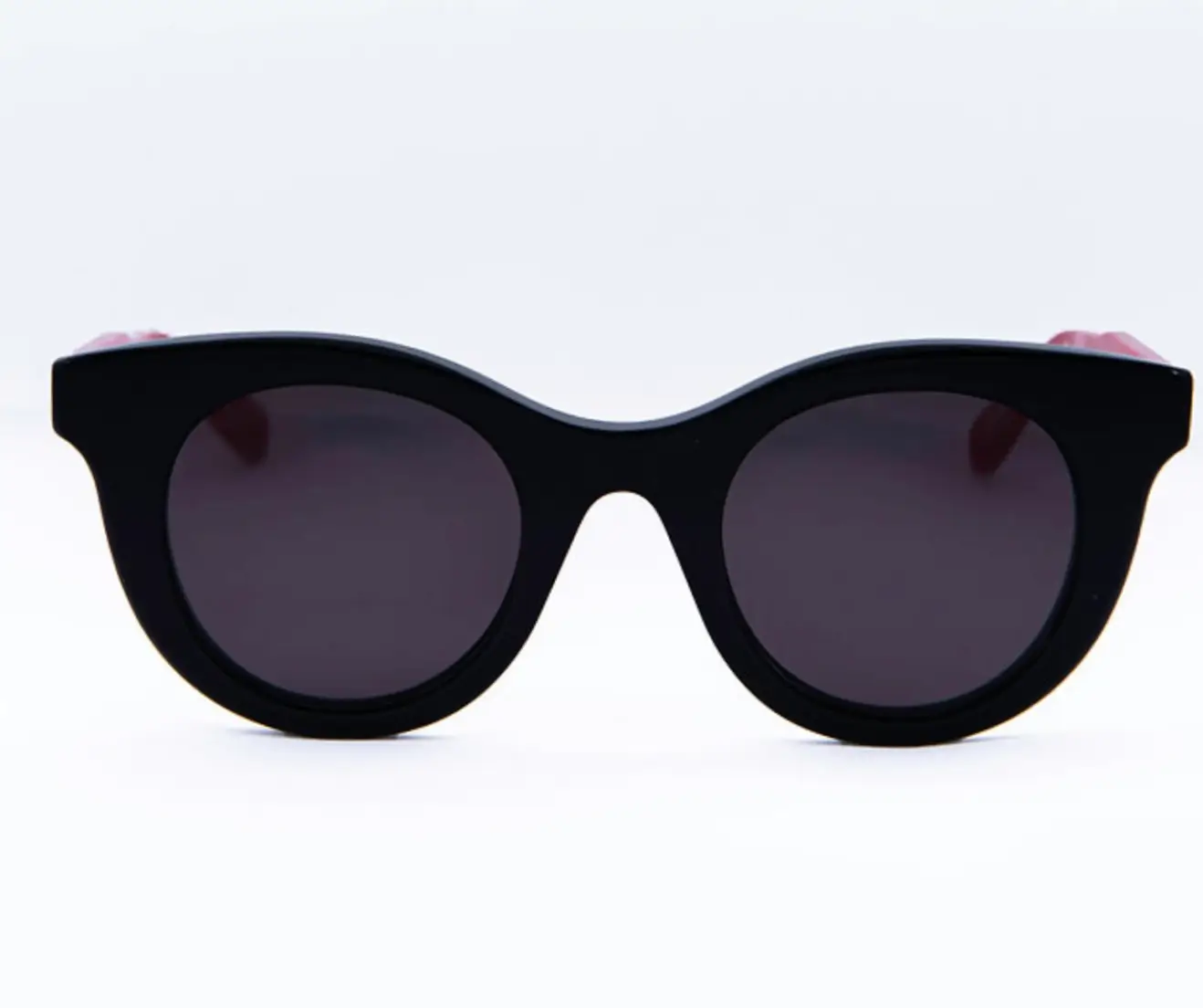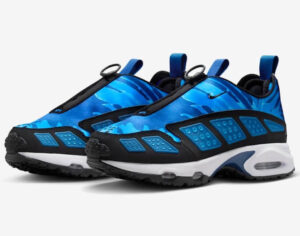In an age defined by rapid technological innovation and design thinking, few projects genuinely align innovation with compassion. The Makeshift Traveler—a solar-powered backpack with an integrated sleeping bag and pillow created by the HomeMore Project—does just that. Conceived as both a survival tool and a transitional companion for individuals experiencing unsheltered homelessness, the Makeshift Traveler represents a convergence of design, social responsibility, and human empathy.
Its premise is simple yet profound: a backpack that sustains life in motion while signaling hope for a stable future. As the HomeMore Project describes it, “it’s designed to be the last backpack the user will ever need to carry.” This isn’t a product; it’s a promise—a symbolic and functional bridge between homelessness and home.
dignity
Homelessness has long been treated as a social issue, rarely a design challenge. Yet, the ways in which people live outdoors—carry their belongings, sleep safely, stay connected—are profoundly shaped by the design of everyday objects. The HomeMore Project, a San Francisco-based nonprofit, emerged from this understanding.
Their approach reframes design not as an indulgence but as a necessity for dignity. By creating tools that directly address the physical and emotional needs of people without permanent shelter, they extend design’s moral scope. The Makeshift Traveler stands as their flagship concept: a portable, solar-powered ecosystem that merges human-centered design with environmental consciousness.
Where urban planners debate housing policies and shelters navigate funding constraints, HomeMore intervenes in the space of immediate survival—without losing sight of the long-term goal of housing reintegration. The organization’s founder, Kevin F. Adler, has emphasized that the project was inspired by conversations with unhoused individuals who described not just their needs, but the emotional fatigue of constant mobility. The Makeshift Traveler, therefore, was not invented for them but with them.
weatherproof
At first glance, the Makeshift Traveler resembles a high-end technical backpack. The hardshell exterior immediately distinguishes it from typical nylon rucksacks often distributed in charity drives. Its rigid surface is weatherproof, shielding its contents from rain, wind, and rough handling. The design reflects a philosophy of permanence in a transient world: even if one’s circumstances are unstable, their possessions—documents, clothes, devices—deserve safety.
Inside, thoughtful compartments echo the structure of travel gear used by adventurers and commuters. But unlike those consumer models, every section here has survival in mind. There are dedicated areas for personal hygiene items, essential documents, and electronics. The balance of form and utility serves a dual purpose: functionality and dignity. The bag doesn’t announce poverty; it presents preparedness.
The double-zipper lock system adds another layer of safety. Theft and loss are frequent realities for people living unsheltered, often forcing them to start over from nothing. By integrating a locking mechanism, the HomeMore Project gives users not only security but psychological relief—a rare sense of control over one’s environment.
innov
Perhaps the most striking feature of the Makeshift Traveler is the solar panel mounted atop its structure. This isn’t just an aesthetic flourish; it’s a life-changing innovation.
Energy independence is a privilege easily taken for granted. For those without homes, a dead phone can mean isolation, missed opportunities, or even danger. Access to electricity becomes a lifeline—for checking job applications, maintaining contact with caseworkers, finding transportation, or simply staying safe through connectivity.
The backpack’s solar panel connects to an internal battery bank, capable of storing energy throughout the day. A USB port allows users to charge phones or small devices. When indoors, the pack can be plugged into a wall charger via a cable integrated into its design. This dual-charging approach ensures flexibility: power from the sun when on the move, and traditional recharging when access becomes available.
Such functionality transforms the backpack from an object into infrastructure—a portable power hub that restores autonomy to its user. In a world driven by digital interaction, this access is not luxury; it is survival.
flow
Beneath the backpack’s sturdy base lies a surprisingly tender feature: a urethane-coated nylon pillow that inflates to provide comfort and support. It’s designed with the understanding that rest—real rest—is one of the most elusive luxuries of homelessness.
The pillow, which folds seamlessly into the lower compartment, offers ergonomic support and insulation from cold surfaces. Combined with the sleeping bag component, the Makeshift Traveler functions as a mobile bedroom. This system not only replaces the need to carry multiple items but also redefines what “portable comfort” means in the context of survival.
Here, HomeMore’s design language speaks volumes. Every zipper, fold, and seam acknowledges a human story. Every angle is shaped by empathy. The project avoids the patronizing aesthetics of “charity gear,” opting instead for sleek, considered design. The goal isn’t to label someone as needy—it’s to honor their resilience.
sustainable
The solar technology embedded in the Makeshift Traveler introduces another key dimension: sustainability. Traditional emergency relief products often rely on disposable materials, emphasizing cost efficiency over longevity. HomeMore takes the opposite route—building something that endures.
By using urethane-coated nylon and high-grade hardshell polymers, the bag withstands environmental stress while reducing long-term waste. The solar panel and battery components, designed for modular replacement, extend its lifespan.
In many ways, the backpack’s sustainable ethos mirrors the ecological challenges of urban homelessness itself. Homeless individuals often live at the intersection of society’s waste streams—reusing, repurposing, and surviving off what the city discards. The Makeshift Traveler reclaims this narrative: sustainability as empowerment, not endurance.
design
Urban homelessness exists alongside some of the world’s most advanced technologies. The paradox is painful: as cities grow smarter, millions still lack basic shelter. The Makeshift Traveler confronts that contradiction head-on. It introduces a model for portable infrastructure—tools that empower individuals even before systemic solutions arrive.
In this respect, the project echoes other global innovations in humanitarian design: from IKEA’s Better Shelter modular housing to the LifeStraw water filter. Each represents a micro-intervention in a macro-crisis. Yet what distinguishes the HomeMore initiative is its intimacy. It’s not architecture or policy—it’s personal. It meets the user where they are, quite literally on the street, and offers a design language of compassion.
Such approaches redefine the role of design in civic life. Rather than wait for policy reform, designers and organizations can deploy empathy-driven tools that create immediate relief. When combined with social programs and housing initiatives, these micro-solutions can build the scaffolding for long-term change.
impression
For someone living outdoors, every object carries emotional weight. Belongings aren’t just possessions—they are fragments of identity, continuity, and memory. A durable, intelligently designed backpack signals more than practicality; it communicates care.
The presence of solar charging and integrated comfort systems restores a sense of agency. To be able to charge a phone, to sleep comfortably, to protect one’s things—these are acts of normalcy in abnormal circumstances. The Makeshift Traveler doesn’t promise to end homelessness, but it restores dignity to those enduring it.
This psychological impact is crucial. Studies in humanitarian design repeatedly show that dignity-centered interventions—those that prioritize comfort and aesthetics alongside function—can improve mental well-being, self-esteem, and motivation for reentry into stable living.
No comments yet.

